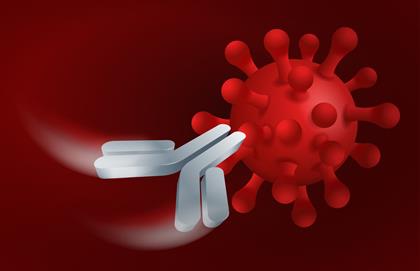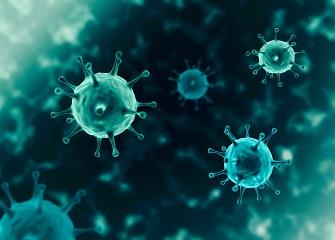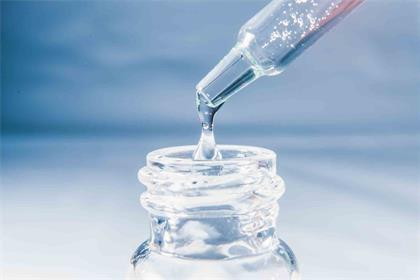
Enzyme inhibitors are molecules that interact with enzymes to decrease their activity, effectively regulating various biological processes. Their action can be reversible or irreversible, and they are critical in both therapeutic applications and biological regulation. Understanding the mechanisms of these inhibitors provides insight into metabolic control within cells and the development of drugs for various diseases. Read More

For a long time, the research and development of each new drug has faced the challenges of high cost and long cycle. In response to these challenges, major pharmaceutical companies have shifted from targeting common diseases to developing drugs for specific diseases. At the same time, these companies are constantly looking for new technologies for new drug development, such as high-throughput screening technology, DNA encoded chemical library, computer-aided drug discovery, and artificial intelligence. Read More

Nanobodies are the smallest functional single-domain antibodies known to be able to stably bind to antigens, and have unique structural and functional advantages. The molecular weight of nanobodies is only 12-15 kDa, which retains the antigen binding ability of traditional antibodies. However, nanobodies have higher solubility and stability, and have unique advantages in biological function and biochemical characteristics. Therefore, nanobodies have shown good control effects in disease diagnosis, cancer and infectious diseases. Read More

Diabetes is a common clinical disease, and with the improvement of living standards, an increase in the number of obese people, and the intensification of aging populations, the incidence of diabetes is increasing year by year. Read More

The cosmetics and skincare industry is constantly evolving and a recent trend that has emerged is the use of fermented ingredients in skincare products. Fermentation is a microbial metabolic process that has been used for centuries in food and beverage production, and now it has been extended to the cosmetic industry. Read More

Paclitaxel is a natural anticancer drug with the molecular formula C47H51NO14. It has been widely used in the clinical treatment of breast cancer, ovarian cancer, and certain head and neck cancers, as well as lung cancer. Its novel and complex chemical structure, extensive and significant biological activity, unique mechanism of action, and scarce natural resources have gained immense favor among botanists, chemists, pharmacologists, and molecular biologists, making it a prominent anticancer star and research focus in the latter half of the 20th century. Read More

The COVID-19 pandemic has killed millions of people. Vaccines certainly are the most outstanding ways to prevent major diseases and death, though they haven't eliminated infections. At present, the most effective vaccine is the mRNA vaccine developed by Pfizer-BioNTech and Moderna. Before that, mRNA technology stopped in the lab phase. Read More

The LipoSM-PROTAC system exhibits selective degradation of target proteins, with folate serving as a key ligand. In this study, the researchers used the estrogen receptor protein (ERα) as a model and confirmed the significant degradation of ERα in in vitro experiments using this system. Read More

The linker is not only the molecule part of the covalent link between the antibody and the small molecule payload, but also a key element with design properties in targeted drug therapy. Read More

What is Ergothioneine? Ergothioneine is a natural product found widely in various organisms, especially in ergot, where it is present in higher amounts. At physiological pH, ergothioneine is stable since it mainly exists in the form of thione. It possesses various physiological functions, including scavenging free radicals, detoxification, maintaining DNA biosynthesis, promoting normal cell growth, and supporting cellular immunity. L-(+)-Ergothioneine can play a protective role in human cells, serving as an essential active substance in the body. Additionally, research indicates that ergothioneine can inhibit the activity of mitochondrial complex II, providing protection to mitochondria; and that ergothioneine has a protective effect on mice with dextran sulfate sodium (DSS)-induced colitis. Read More

Aluminum adjuvants have been used in billions of doses of vaccines over the last 100 years, primarily in children and adolescents. Despite their limitations, such as their relative inability to induce robust cell-mediated (Th1) immune responses and susceptibility to freezing, their documented safety and tolerability, as well as their low cost, continue to make this class of adjuvants a very attractive component of vaccines. Read More

Isotopes are different atoms of the same element with the same number of protons and different numbers of neutrons called isotopes of each other, which can also be interpreted as different nuclides of the same element called isotopes of each other. Read More

Chemotherapy with anti-tumor agents is currently one of the most important systemic treatments for cancer. However, direct treatment with drugs lacks specificity and sensitivity and tends to attack normal cells indiscriminately, resulting in side effects. Liposomes, as drug carriers, provide a superior solution for maintaining or enhancing the efficacy of chemotherapy while reducing the severity of reactions and side effects. Read More







